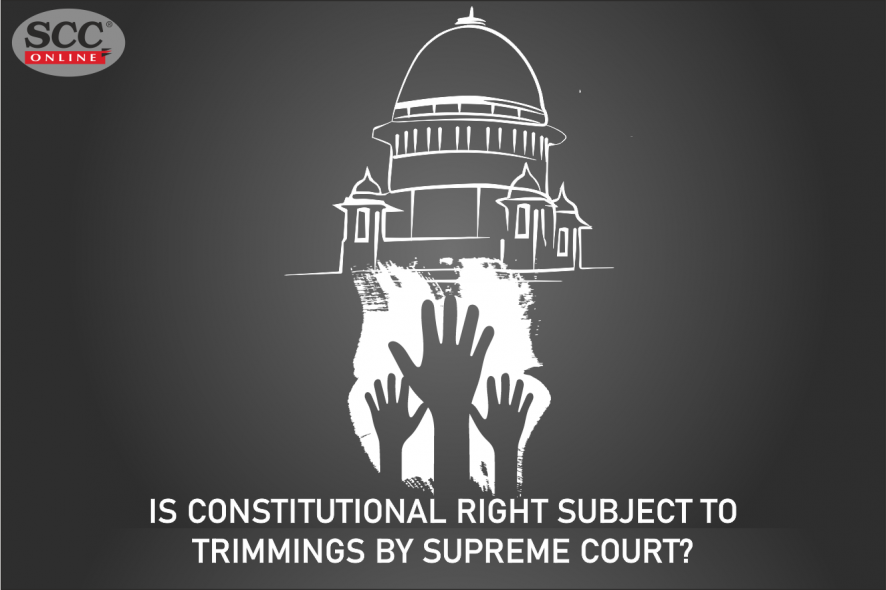A TWO judge bench of the Supreme Court,1 in Union of India v. Paul Manickam,2 a case challenging the preventive detention of the respondent’s daughter as unlawful has observed as under:3
It is appropriate that the concerned High Court under whose jurisdiction the order of detention has been passed by the State Government or Union Territory should be approached first. In order to invoke jurisdiction under article 32 of the Constitution to approach this court directly, it has to be shown by the petitioner as to why the high court has not been approached, could not be approached or it is futile to approach the high court. Unless satisfactory reasons are indicated in this regard, filing of petition on such matters, directly under article 32 of the Constitution is to be discouraged.
This observation of the apex court that before a person complaining of violation of his fundamental rights approach the Supreme Court under article 32 should approach the high court first under article 226, raises serious questions as to the true scope and ambit of article 32.
In the instant case the respondent who is the father of the detenue who was detained under section 3(1)(i) of the Conservation of Foreign Exchange and Prevention of Smuggling Activities Act, 1974 for possessing a huge quantity of contraband articles, addressed a representation on her behalf to the President of India. He also filed a habeas corpus petition before the Madras High Court challenging the detention order. The court dismissed the writ petition but on his application for review it quashed the order of detention. Hence this appeal by the Union of India to the Supreme Court.
Thus, it was not the petitioner who approached the Supreme Court by way of a writ under article 32 for setting aside the order of detention. Instead it was the Union of India which approached the Supreme Court by way of appeal under article 136 of the Constitution by raising various contentions, inter alia, that:4
[R]enegades who disturb peace and tranquillity of citizens are like termites which corrode financial stability of the country with vicious designs file petitions full of falsehood and at times approach this court under article 32 even without approaching the jurisdictional High Court.
What made the Union of India to take this pea is not clear from the facts of the case since the petitioner had not approached the apex court directly. It was against this plea, the Supreme Court, while dismissing the appeal by the Union of India in the instant case expressed the above quoted view.
To read the full text of the article, click here
NOTE: This article was first published in the Journal of the Indian Law Institute 47 JILI (2005) 102.
* Associate Research Professor, Indian Law Institute, New Delhi.
1 Doraiswamy Raju and Arijit Passayat JJ.
2 (2003) 8 SCC 342 : AIR 2003 SC 4622.
3 Id. at 4630. (Emphasis added).
4 Id. at 4624.







